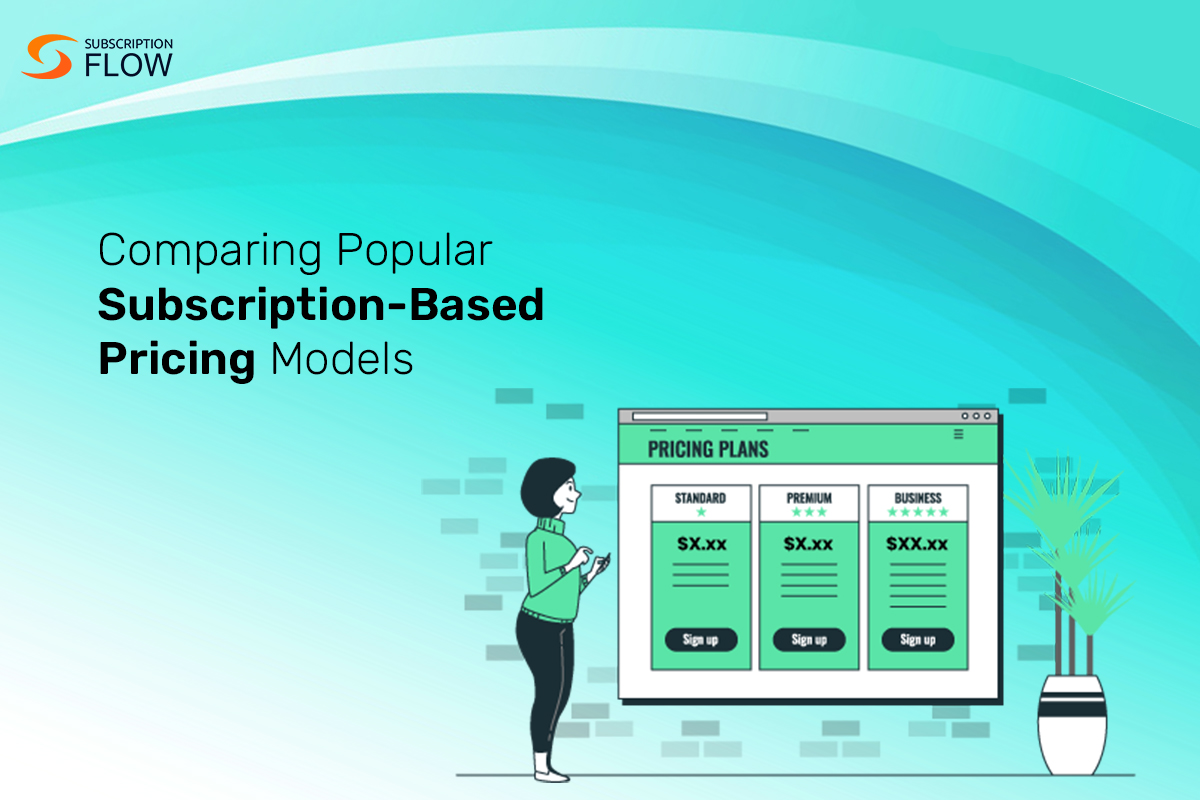
Comparing Popular Subscription-Based Pricing Models
The subscription-based pricing model is more than a passing fad or industry standard. For software firms, it is one of the most profitable pricing structures.
According to a KeyBanc survey of 100 software companies, the median gross profit margin on subscription or SaaS income is 80%. In fact, only around 10% of respondents indicated a profit margin on subscription revenue of 60% or less.
The advantages of subscription pricing are obvious, but determining the best price and billing plan for your SaaS remains difficult. Businesses require price points that are proportional to the value of their products, as well as pricing tactics that are appealing to their customers.
When determining the best pricing, consider your customers’ demands, the competition, and your bottom line. Then, you must identify benchmark indicators to help you track the success of your subscription business.
With so many moving pieces, it might be difficult to know where to begin.
This guide will assist you by examining various possible pricing structures and offer advice on how to manage subscription-based pricing as your firm expands.
5 Subscription-Based Pricing Models
Here are five popular subscription pricing models, along with brief descriptions of each:
SaaS (Software as a Service)
Description: Software as a Service (SaaS) is a cloud-based service delivery model where users pay a recurring fee, typically on a monthly or annual basis, to access and use software applications over the internet. The software is hosted and maintained by the service provider, relieving users of the need to install, update, or manage the software on their local devices.
This model offers users the convenience of accessing the software from anywhere with an internet connection, often through a web browser. SaaS applications cover a wide range of functions, from office productivity tools to customer relationship management systems and specialized industry-specific software.
Examples: Microsoft 365 (comprising applications like Word, Excel, and Outlook accessible via a web browser), Google Workspace (providing collaboration tools like Google Docs and Gmail), Salesforce (offering customer relationship management solutions), and Zoom (a popular video conferencing platform).
Freemium Model
Description: The freemium pricing model combines elements of both free and premium offerings. It involves providing a free basic version of a product or service, which is accessible to all users. This basic version often includes core features but may have limitations, such as reduced functionality or the presence of advertisements.
Users have the option to upgrade to a premium or paid version that unlocks additional features, capabilities, or an ad-free experience. This approach allows users to experience the product’s core value before committing to a paid subscription.
Examples: Spotify offers a free tier with occasional advertisements and limitations on skipping songs, while its premium tier provides uninterrupted music streaming without ads and additional features like offline listening.
Dropbox provides a free tier with limited storage space, while the paid tiers offer more storage, advanced sharing options, and enhanced collaboration features.
Read more: The SaaS Freemium Model – A Recipe for Success
Tiered Pricing
Description: Tiered pricing involves offering multiple levels or tiers of a product or service, each with distinct sets of features, capabilities, and pricing. Customers can choose the tier that best aligns with their specific needs, budget, and desired level of functionality.
Typically, higher-tiered plans come with additional benefits and more advanced features. This model allows businesses to cater to a diverse customer base with varying requirements.
Examples: Netflix offers multiple tiers – Basic, Standard, and Premium. The Basic plan allows streaming on one screen in standard definition, the Standard plan permits streaming on two screens in high definition, and the Premium plan enables streaming on up to four screens in ultra-high definition.
Mailchimp provides a range of plans including Free, Essentials, Standard, and Premium, each offering different features like email campaigns, automation, and audience segmentation.
Membership Models
Description: Membership models require customers to pay a regular fee, often on a monthly or annual basis, in exchange for access to a range of exclusive benefits, services, or discounts. These benefits can vary widely depending on the industry or business type and may include perks like premium content, early access to products, special events, or discounts on goods and services. This model fosters a sense of community and loyalty among members.
Examples: Amazon Prime is a well-known membership program that offers subscribers benefits like fast shipping on eligible items, access to streaming video and music, exclusive deals, and more. Costco operates a membership-based warehouse club where customers pay an annual fee for access to discounted products, bulk purchasing, and complete services.
Usage-Based Pricing
Description: Usage-based pricing is a billing model where customers are charged based on their actual usage or consumption of a product or service. The charges are determined by specific metrics relevant to the offering, such as data usage, storage space, the number of transactions, or any other quantifiable unit.
This model provides flexibility to customers as they are billed according to their level of activity or consumption.
Examples: Amazon Web Services (AWS) utilises usage-based pricing for its cloud computing services. Customers are charged based on factors like compute hours, storage capacity, data transfer, and other resource usage. Similarly, ride-sharing services like Uber charge customers based on the distance and time of their rides, resulting in variable pricing depending on the ride’s duration and distance.
Read more: Navigating the Maze: Unraveling Enterprise SaaS Pricing Models
Final Word
These subscription pricing models serve as effective strategies for businesses to structure their offerings and monetize their products or services in a way that aligns with customer preferences and business goals.
Each model carries its own set of advantages and considerations, and the choice of model should be tailored to the specific industry, target audience, and overall business strategy. Furthermore, businesses often employ a combination of these models to cater to different customer segments or use cases.
Whichever model you choose to eventually run your operations with, SubscriptionFlow can help automate your billing and payment processes and make revenue recognition easier. Book a demo with us to find out more!










